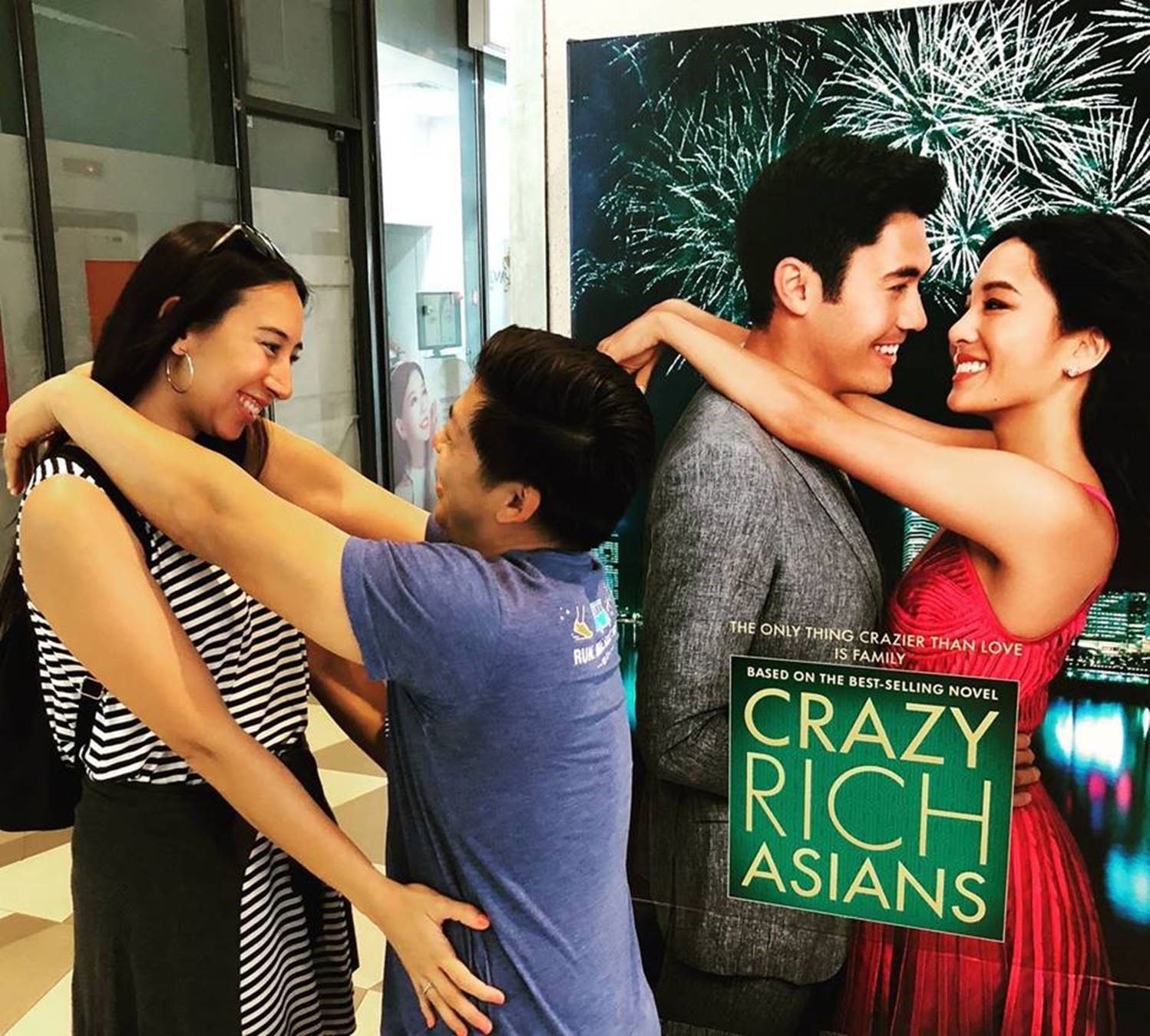Two months ago, my wife and I got married, moved across the world and started new jobs—all within TEN DAYS! Stressful, but all of that was worth it because we now live in Singapore, an amazing country that has received international attention for being the setting of Crazy Rich Asians, a global movie phenomenon and one of the highest grossing romantic comedies of all time. As Asian-Americans, we couldn’t wait for this movie to come out and took the appropriate fanboy/fangirl pictures when it premiered (personally, I think Henry Golding’s got nothing on my wife, Lauren).

Above: I know it’s hard to tell the difference, but my wife, Lauren, and I are on the left, and the movie poster is on the right.
But is the Singapore of Crazy Rich Asians representative of the Singapore experienced by the people who live here? That’s one of the most common questions I get from my U.S. friends: “Just how rich are the crazy rich Asians of Singapore?” In my experience, Singapore is much more ethnically and economically diverse than the movie depicts.
To dive deeper into questions of Singaporean wealth and inequality, I turned to a treasure trove of official government data kept by the Singapore Department of Statistics (SingStat). While I couldn’t get data granular enough to answer questions about the crazy rich top 1%, we certainly found some interesting things about both income inequality and the lived experiences of Singaporeans across different income deciles.
As a contrast to Crazy Rich Asians, the 2018 book This is What Inequality Looks Like by Dr. Teo You Yenn has flown off the shelves of local bookstores while illustrating the daily lived experiences of the poor in Singapore. The book criticizes the wealth gap and has sparked discussion and parliamentary debate about structural inequality and what the government can do to improve pathways to upward mobility.
What are your thoughts about inequality in contemporary Singapore?

